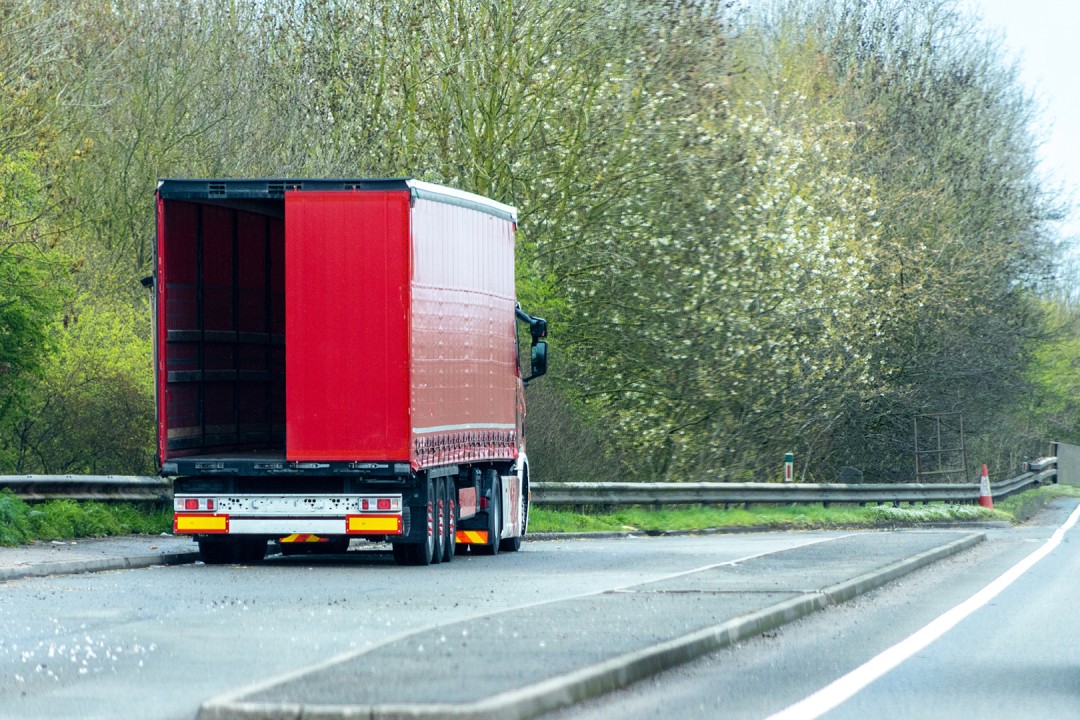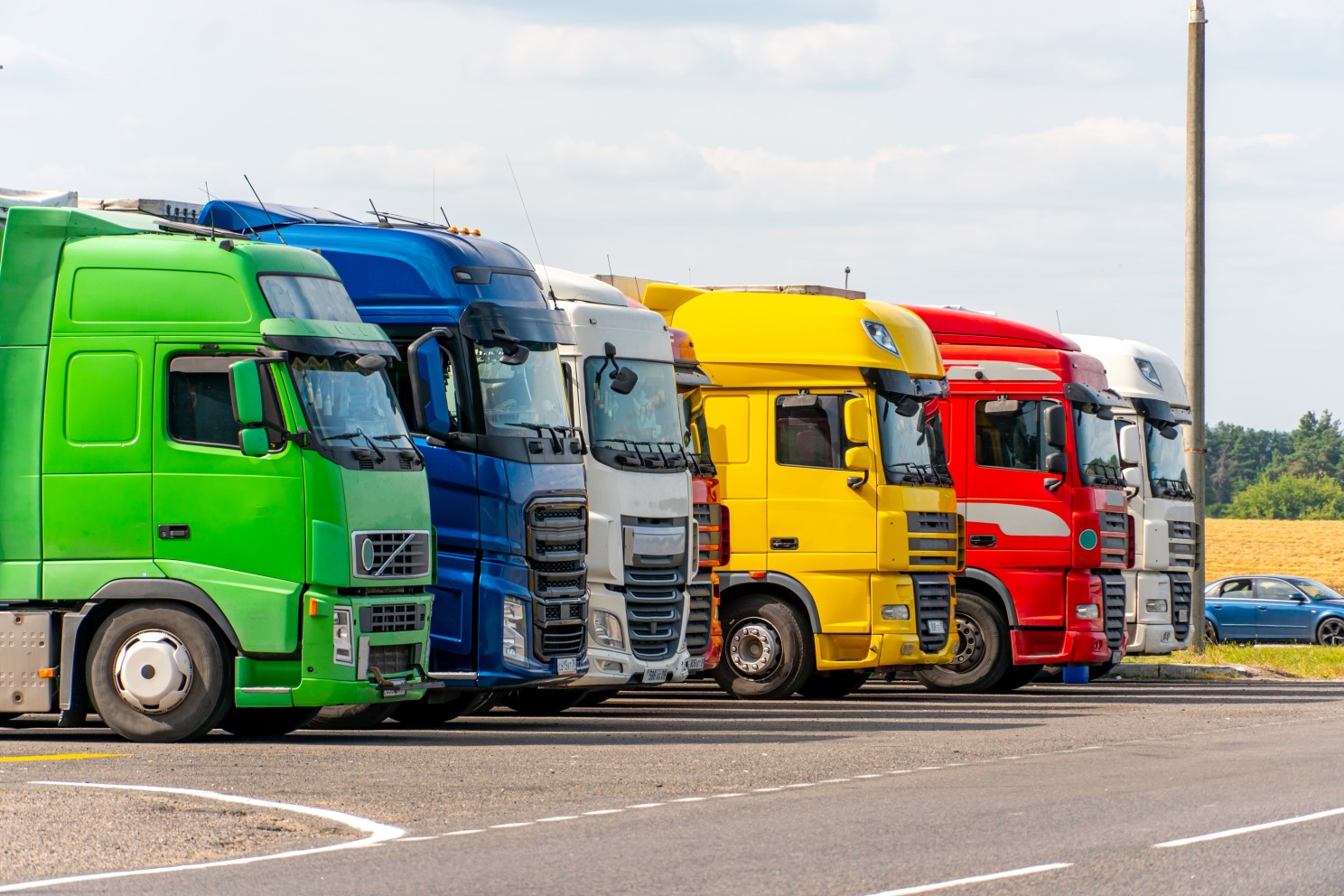
Susie Jones
Dávají řidiči přednost odpočívadlům před čerpacími stanicemi
Vytvořeno: 19.08.2024
•
Aktualizováno: 19.08.2024
V roce 2022 bylo ve Spojeném království zaznamenáno více než 5 000 hlášení trestných činů v nákladní dopravě, což představuje ztrátu ve výši zhruba 66 milionů liber. Zvýšená kriminalita v nákladní dopravě představuje kritickou hrozbu pro dodavatelské řetězce, podniky a spotřebitele - což vyvolává značné obavy u subjektů působících v odvětví nákladní dopravy.
Zpráva zveřejněná policií hrabství Cambridgeshire uvádí, že 46 % všech krádeží nákladu se odehrává na ulicích a odpočívadlech a 27 % na čerpacích stanicích. Navzdory tomu sociální poslech ukazuje, že mnoho řidičů z různých důvodů nadále parkuje na odstavných plochách.
Problémy s odstavnými parkovišti
Pro řidiče je parkování přes noc na odstavném parkovišti často nejjednodušší a nejekonomičtější variantou. Přináší však několik nevýhod, které mohou negativně ovlivnit psychické zdraví a bezpečnost řidičů.
Vybavení - Řidiči potřebují více vybavení, jako jsou toalety, sprchy a jídlo. Nedostatek čistých zařízení může zvýšit nepohodlí a negativně ovlivnit spánek, soustředění a duševní zdraví.
Bezpečnost řidičů - Odložené parkování představuje další riziko pro bezpečnost řidičů. Studie AA zjistila, že dvě třetiny smrtelných nehod stojících vozidel na dvouproudé silnici se staly na odstavných parkovištích - více než polovinu z nich tvořila těžká nákladní vozidla.
Krádeže nákladu - v odvětví došlo v období červen-červenec 2023 k nárůstu krádeží nákladu o 380 %, což poukazuje na potřebu bezpečného parkování. Vzhledem k tomu, že oportunističtí zloději se zaměřují na odstavné plochy, hrozí řidičům ztráta nákladu a vozovým parkům miliony liber.
Proč řidiči parkují na odstavných plochách
Navzdory rizikům sociální průzkum provedený prostřednictvím Facebooku naznačil, že 70 % řidičů je méně ochotno zvolit parkování pro kamiony než odstavné parkoviště, a to z několika důvodů:
Bezpečnost
Podle ohlasů na sociálních sítích se 43 % řidičů kamionů rozhodlo neparkovat na zastávce nebo čerpací stanici kvůli nedostatečným bezpečnostním opatřením.
"Parkuji pouze na odstavných plochách nebo v průmyslových zónách. Když jsem zaparkoval v servisech nebo na zastávkách pro kamiony, tak mi ustřihli záclony," říká řidič kamionu Luke.
Bezpečnost a zabezpečení zastávek pro nákladní automobily ve Velké Británii je v odvětví nákladní dopravy horkým tématem diskusí - řidiči žádají vládu o větší podporu při zajišťování dalších bezpečnostních zařízení. Z předchozích ohlasů vyplynulo, že řidiči chtějí, aby se poplatek za těžká nákladní vozidla investoval do bezpečnějších, hygieničtějších a cenově dostupnějších parkovišť.
Ze sociálních médií 59 % řidičů kamionů uvedlo, že ve Spojeném království není ve srovnání s Evropou dostatek bezpečných zastávek pro kamiony. Tento názor podpořila i zpětná vazba z SNAP's Truck Park Tour, kde 31 % evropských řidičů uvedlo, že jim přístup na exkluzivní a bezpečná místa SNAP přináší největší užitek. Bezpečnostní organizace TAPA je v Evropě široce uznávaná - mnoho míst je držitelem certifikace úrovně 1, 2 nebo 3.
Naproti tomu ve Velké Británii jsou pouze dvě místa s certifikací TAPA - tato místa akreditují autorizovaní auditoři SNAP PSR 3. úrovně. Formula Services a The Red Lion mají certifikaci úrovně 3 - v The Red Lion byl nahlášen jeden přestupek a ve Formula Services žádný, přestože se nachází v oblasti s vysokou kriminalitou.
Markus Prinz, vedoucí manažer pro normy, školení a certifikaci ve sdružení TAPA, vysvětluje: "Plně podporujeme všechny aktivity zaměřené na zajištění efektivní a bezpečné parkovací infrastruktury pro nákladní vozidla a zvýšení bezpečnosti řidičů nákladních vozidel, vozidel a nákladu. Věříme, že vytvořením otevřeného ekosystému pro technickou a ekonomickou optimalizaci bezpečného parkování nákladních vozidel lze podpořit přechod na bezpečné parkování nákladních vozidel."
Neochota společnosti
30 % řidičů uvedlo, že jejich flotilové společnosti nejsou ochotny platit za zastávky kamionů nebo čerpací stanice. Jeden z řidičů vysvětlil:
"Stále méně firem bohužel platí za noční parkování, zařízení zůstávají otevřená jen díky tomu, že snižují počet zaměstnanců, aby pokryly účty, a parkovacích míst je méně."
Zastávky nákladních vozidel s maximální kapacitou
"Které zastávky mají ochranku, poznáte podle toho, že jsou plné už v 18 hodin."
70 % řidičů vyjádřilo své rozčarování nad tím, že jsou bezpečné zastávky pro kamiony maximálně vytížené, takže jim nezbývá nic jiného než parkovat na odstavných plochách. Zpětná vazba z Truck Park Tour poskytla podobný názor - mnozí vyjádřili své obavy z toho, že místa ve Velké Británii jsou plná ještě před příjezdem.
Údaje z průzkumu TfL 2022 o parkování nákladních vozidel uvádějí, že navzdory 12% nárůstu kapacity v místě v letech 2017-2022 nestačí k pokrytí 21% nárůstu počtu vozidel ve stejném období.

Omezení nočního parkování na odstavných plochách
Vládní financování
18 % řidičů si přeje, aby vláda poskytla více finančních prostředků na podporu bezpečnostních zařízení. V září 2023 udělilo ministerstvo dopravy 8 milionů liber 39 zařízením u silnic po celé Anglii na zlepšení vybavení a bezpečnosti. Tým SNAP pro přístup a bezpečnost začíná podporovat společnosti, které získaly finanční prostředky, tím, že realizuje jejich zlepšení. Další finanční prostředky až do výše 100 milionů liber jsou k dispozici do roku 2025 v rámci vládního programu spolufinancování.
Bezpečnostní instalace
Abyste řidičům kamionů poskytli bezpečný prostor, mohou zastávky kamionů investovat do robustních bezpečnostních zařízení - produkty jako CCTV, ANPR, interkom, zábrany a kiosky zvyšují bezpečnost na místě a odrazují od trestné činnosti. Společnost SNAP Access & Security kombinuje bezpečnostní produkty na míru a odborné znalosti trhu, aby ochránila osoby, vozidla a obsah zastávek pro nákladní automobily.
Mohou řidiči kamionů ve Velké Británii spát u silnice?
Od 1. listopadu 2017 zavedl DVSA nová pravidla a předpisy týkající se odpočinku řidičů na místech, jako jsou obytné zóny a odpočívadla. Pokud řidiči stráví přestávku na odpočívadle nebo na okraji silnice, mohou být pokutováni až do výše 300 liber.
Jak si řidiči kamionů udržují bdělost při řízení?
Řidiči nákladních vozidel musí dodržovat pravidla tachografu o přestávkách v zájmu své bezpečnosti a bezpečnosti všech ostatních účastníků silničního provozu. Účelem tachografu je zabránit únavě řidičů a zajistit, aby řidiči a zaměstnavatelé dodržovali pravidla.
Přesto je prevence nudy a únavy na silnici pro mnoho řidičů náročná a může ovlivnit jejich pohodu. Většina řidičů dává na cestách přednost poslechu hudby a podcastů a vyžívá se v sociální interakci s ostatními řidiči na zastávkách kamionů a čerpacích stanicích.
Mají řidiči nákladních vozidel ve Velké Británii povoleno přepravovat cestující?
Průměrný řidič nákladního vozidla stráví za volantem zhruba 12 hodin denně. Proti osamělosti a nudě mohou řidiči vozit cestující, pokud dodržují zvláštní předpisy stanovené FMSCA. Řidiči musí získat písemné povolení od své společnosti předložením žádosti o přepravu cestujících - v této žádosti musí být uvedena doba trvání cesty a termíny.
Společné požadavky jsou následující: - Cestující nesmí být těhotná.
Nesmí trpět závažnými nebo chronickými zdravotními potížemi.
Musí být starší deseti let
Zdravotní pojištění je povinné.



